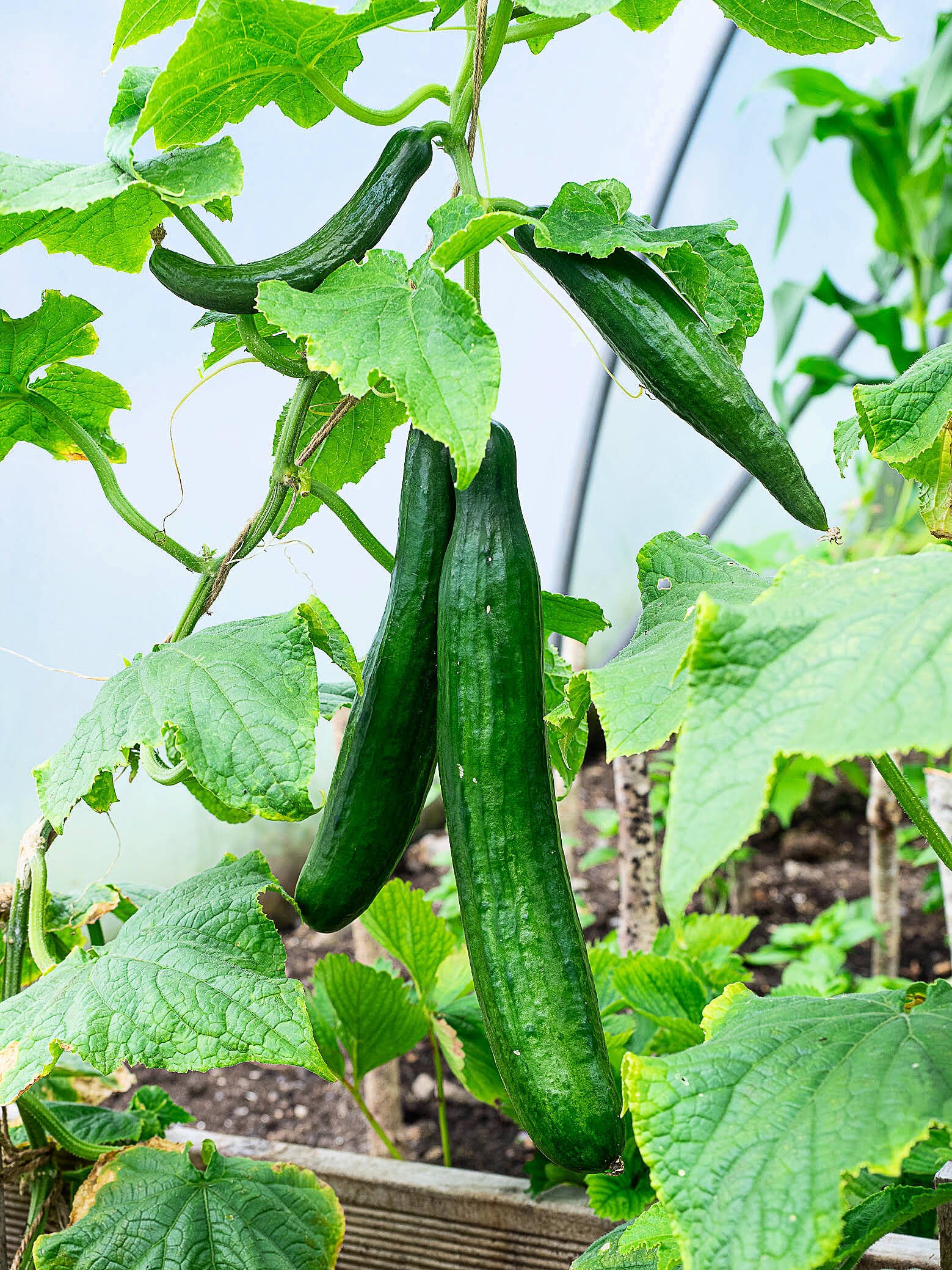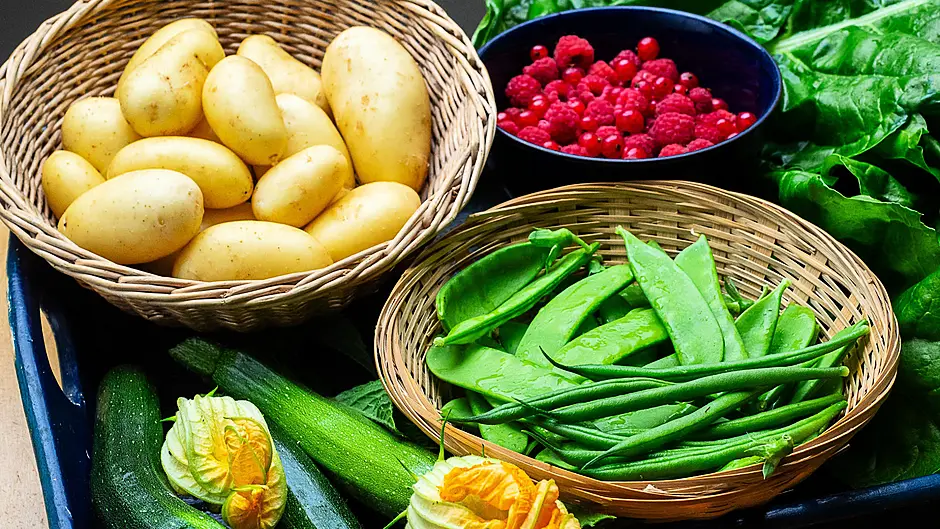
Sweet peas are such lovely flowers to grow and they started to produce blooms earlier than usual this year.
They look so pretty, both in the garden and as cut flowers on the table. A pack of mixed seed will give flowers of different colours.
Some mixes can be bold strong colours and others favour pale pastels.
Keep picking off faded flowers so that more will grow and plants keep flowering for longer.
You can let a few seed pods form if you want to save your own seed to grow on next year; they may not grow the same as the parent, but they can still produce plenty of flowers.
Cucumber care
Plants grown in the shelter of a greenhouse or polytunnel should be producing plenty of cucumbers now. It can be a feast or famine with individual plants; you might pick five at once then none for two weeks, so it’s always worth growing a couple of plants so you have fewer cropping gaps. A freshly picked cucumber is so much nicer than ones that have been picked days earlier, and spent more days again in transport and in a shop display. If you have a glut, there will always be takers for the surplus.
Water plants carefully and aim to keep compost damp. A wet growing medium can lead to root and stem rot, and even large plants can collapse if this problem takes hold. Apply a layer of fresh compost to earth up around the stem every ten days or so and the plant will push out new roots to take advantage of this. You can use a liquid feed every two weeks.
 Enjoy delicious fresh-picked cucumbers
Enjoy delicious fresh-picked cucumbers
Cucumbers can suffer from magnesium deficiency. If leaves turn yellow with dark green veins, then this is the problem. Use a teaspoon of Epsom salts in a watering can of water and apply onto damp compost.
Most greenhouse varieties are ‘all female’ which means they only produce flowers with a small cucumber behind them. Male flowers are produced occasionally. These grow on a thin stem and the result can be bitter fruit if the male pollen reaches a female flower. Remove any male flowers as soon as you see them.
Provide supports for these rambling plants and tie stems in so they don’t break under the weight of the crop. Check along the length of the stem and be vigilant for patches of white mould or weeping wounds. Wipe these clean and brush on a weak milk solution of nine parts water to one part milk as soon as you spot the problem, and this may just save the plant.
Enjoy the wonderful summer harvest
There’s plenty to pick and eat at this time of the year and it’s only the start of much more to come. Pick and eat peas and beans at their fresh best. Small pods aren’t stringy and the contents are sweet and delicious. French beans hang underneath the leaves so lift, check, and pick every couple of days. Some varieties produce long thin pods, others are fatter or flatter.
 Sweet peas started flowering early.
Sweet peas started flowering early.
Baby beetroots are delicious and quick to cook. Don’t throw small plants away if you are thinning them out in the row, as tiny beets and healthy leaves can be delicious to eat.
Currants and raspberries should be picked regularly. Eat what you want and freeze any surplus. If you open-freeze on trays before bagging up, the fruit is less likely to clump together.
If your soft fruit is growing underneath a net, be sure to close any gaps when you finish harvesting. Birds can spend a lot of time looking for a way into your fruit, so don’t leave them an opening.
Winter greens
While you are enjoying the early summer harvest, don’t forget about the tasty greens that will keep you fed through the winter. It’s time to get young broccoli, cabbage and kale plants into their final position outdoors. Cauliflower plants can go into the ground too for late autumn cropping. All of these do well in a plot where early potatoes have been lifted; just firm the soil a little so it isn’t too loose. Water plants in well and keep them watered in dry weather.
Allow 60cm between plants, as they need plenty of room to grow. Knock a support pole in next to each tall-growing plant and remember that this has to be strong enough to support plants through winter storms. Keep tying the stems to supports as they grow.
Is it time to sow?
Don’t sow anything at a time that you can’t care for it. If you are heading away on holiday, then make new sowings when you get back. There’s no great rush at this point and there is no point risking seedlings drying out, wilting or being eaten in your absence.







